An ‘American’ Adventure
Watch ‘American Girls’ podcast co-hosts Allison Horrocks ’09 and Mary Mahoney ’09 enjoy their special visit to the American Girl Store in New York. Video by Helder Mira.
As the creators and hosts of the “American Girls” podcast, Trinity College alumnae Allison Horrocks ’09 and Mary Mahoney ’09 have found a way to tie together their childhood passion and their professions as historians.
In the podcast, Mahoney—who double-majored in history and English and is now back at Trinity as an Andrew W. Mellon Postdoctoral Fellow in Digital Humanities—and Horrocks—a double-major in American studies and history who is now a park ranger at Lowell National Historical Park in Massachusetts—analyze book after book, doll after doll of the beloved American Girl series, which was created by Pleasant Company in 1986.
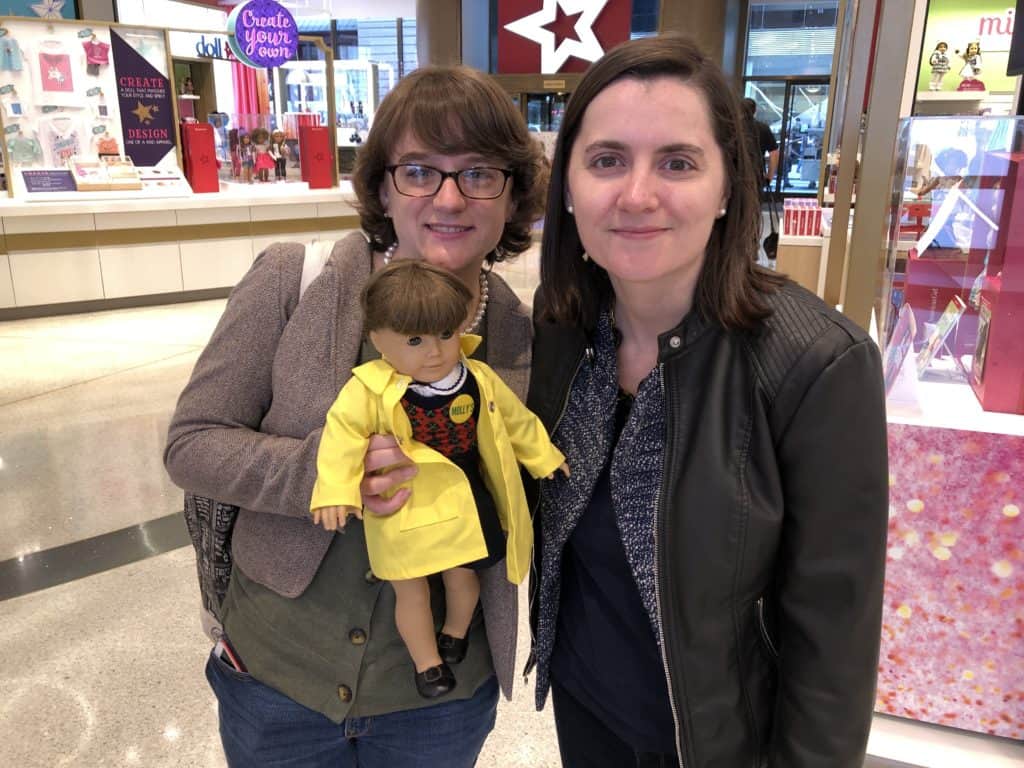
While Horrocks and Mahoney knew of each other at Trinity, they became friends at the University of Connecticut, where they each pursued a Ph.D. in history and bonded over their shared love of all things American Girl. Here, they speak with fellow American Girl fan Kelly M. Vaughan ’17 about why they decided to embark on a podcast about American Girl and how listeners have responded to their fun, informative, and nostalgia-filled conversations:
KV: You both are trained historians and I imagine are knowledgeable about a wide variety of topics in U.S. history. Why did you decide to focus on American Girl dolls for this podcast?
AH: I think in some ways it pulls together our own interests. Mary has done amazing scholarship and is really well-read on the history of books and readers’ relationships to books in their lives. I did research in the history of families and domesticity. This is a way for us to connect all of that to something we loved as children.
KV: What aspects of both your undergraduate and graduate education do you feel trained you to be able to closely analyze these dolls and their books?
MM: I think in both undergrad at Trinity and in graduate school we spent a lot of time reading books that analyzed all facets of culture. We thought about big ideas and the importance of arguments that you can tease apart and perfect again. It might sound funny to take that level of seriousness to books intended for 9-year-olds, but I think that allows us to understand that these books are histories of the eras that they claim to present, but also histories of the era in which they were produced.
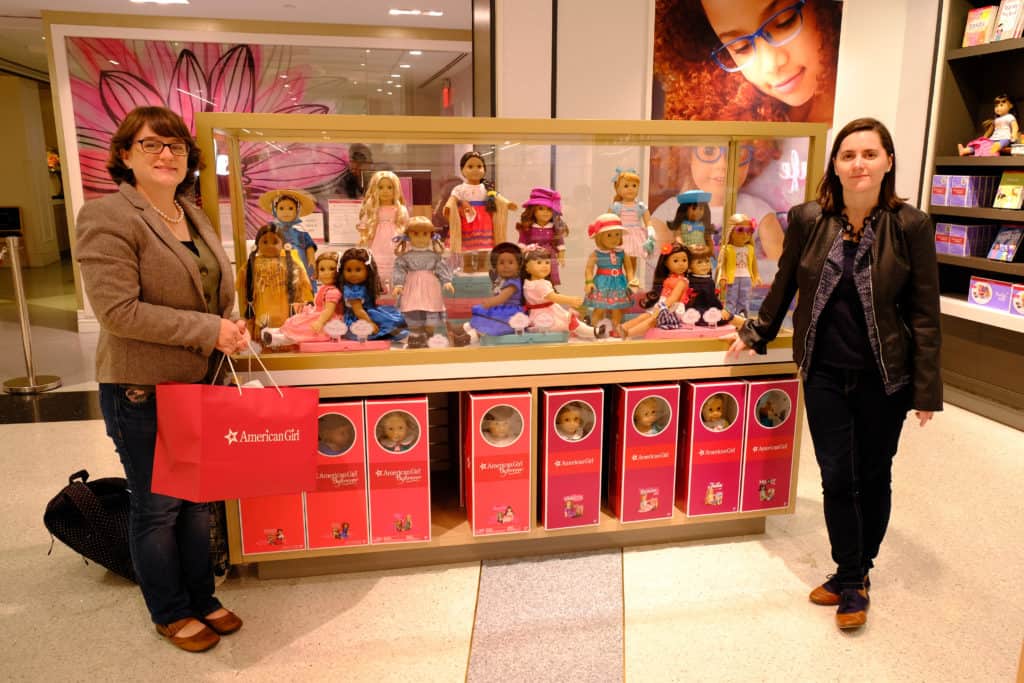
KV: What was it like going back and reading all of these American Girl books after 20 years? Did you feel like historians or 9-year-olds?
AH: I’m not looking to feel the way that I felt when I was 9, but I am interested in what kind of work the books did for me then versus now.
MM: I do remember the feeling I had when reading the books—the feeling of wondering what was going to happen in these girls’ lives and wondering in some trans-historical way if I would ever have a life like theirs.
KV: How do you think the podcast and your careers work to inform each other?
MM: At Trinity, part of my work in the digital humanities includes outreach to faculty and students about the forms of digital scholarship we support in the library, including websites, digital exhibits, data analysis, mapping projects, and podcasting. I love coordinating research projects that offer exciting examples of integrating scholarship with digital tools that can reach broader audiences. One project I’m particularly excited about is “Hidden Literacies,” a digital anthology edited by English professors Hilary Wyss and Christopher Hager that explores histories of literacies in early America. Creating work that is digital, accessible, and educational is a through line for my work both personally and here at Trinity.
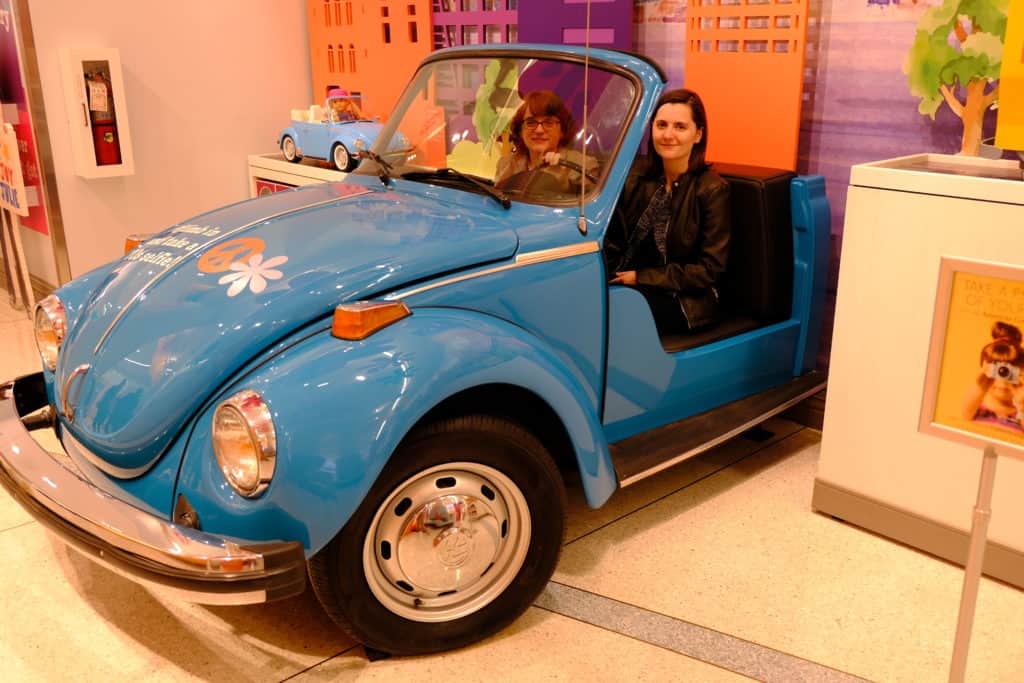
AH: Much of what we do on the podcast—storytelling, sharing what we know about history, thinking about intergenerational learning, connecting with the public through social media—is very similar to my day-to-day work as a public historian and park ranger with the National Park Service. Since starting this podcast, I think I have become even more aware of the importance of what museum professionals call “sticky memories,” or the moments that stay with us through the life cycle. When I am talking to a young person in the museum where I work, I am aware that the impact of our conversation may kindle a lifelong interest, which they may not even be able to articulate until much later. One of the most delightful aspects of doing the podcasts has been hearing from people my age who were once on the other end of such conversations, and it’s a reminder to me just how important every single visitor is, no matter their age.
KV: How do you think the American Girl books read differently in 2019 than they did in the late 1980s and 1990s?
AH: Josefina is growing up in a place that is now New Mexico, but she’s not really a girl of the United States. Thinking about this very tender story about a young woman living near what is now the border, we thought really carefully about what we talked about because it’s on the news and causing a lot of trauma in the country. It’s not something we were aware of as 9-year-olds, and it’s a topic that reads differently in 2019.
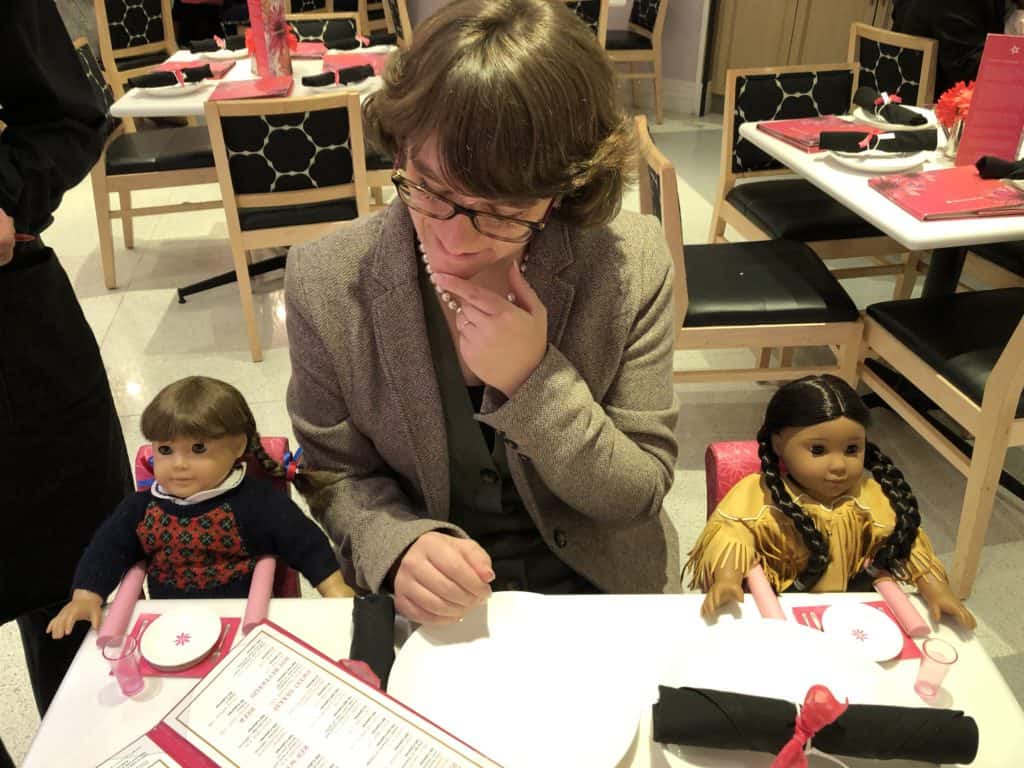
KV: Throughout the podcast episodes, you poke some holes in the historical narratives, but seem to believe there are valuable lessons in the books for young girls. What do you think are some of the most important takeaways?
MM: I think the importance of friendship—particularly in the lives of young women—is a theme that’s really important and worth cultivating. The real pleasure I find in this show is not getting to talk about American history, but getting to do the show with my best friend. As a kid I played with the dolls by myself, so it was kind of a lonely enterprise, but now it’s this great source of friendship and that’s something we could only use more of.
KV: How is the podcast being received by listeners? Where is it going next?
AH: We get a lot of direct messages with people sharing photos of themselves as young girls with their dolls and it’s always accompanied by a very precious and beautiful story. How many people get to say that they open a blurred photo on social media and it’s something really sincere and wonderful from their childhood? We do not take that for granted at all.
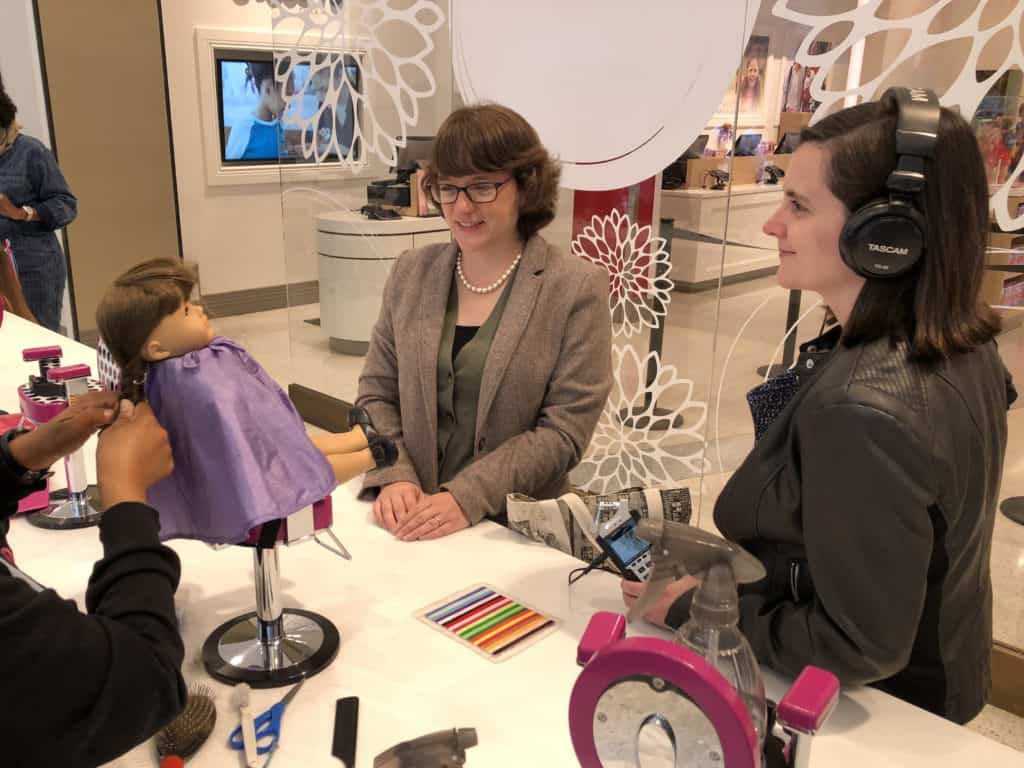
MM: One episode is actually in the style of The Care & Keeping of You book series. If anyone has read the Josefina books, you know that their greatest theme is grief. We were approached by a therapist who works with young people and she’s going to talk to us about ways to deal with grief in your own life and how to support a friend who is grieving.
KV: What was your reaction to The New York Times column that TV critic Margaret Lyons wrote about your podcast? Did you know that was going to happen?
MM: I saw that the writer had tweeted something about American Girl books being available on InternetArchive.org. I retweeted it because I thought some of our listeners might want to check it out and she DMed me and told me she was writing about our show. Needless to say, we were both pretty surprised!
AH: I was worried about reading the comments because there are things you don’t want to read about yourself, but a friend said to me, “Allison, they’re not about the two of you at all. It’s everyone sharing their story and connections to it and they’re excited to listen to it.”
MM: I think a lot of treasured books give you a language for your own experience, so having a forum to talk about these books is just inviting readers to share their memories.
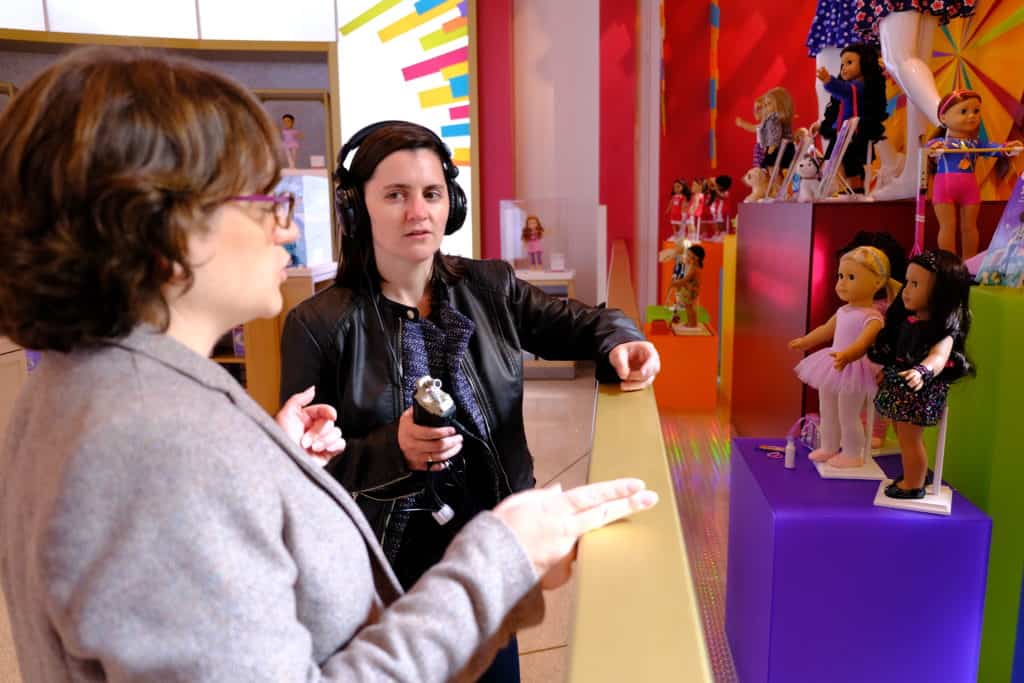
KV: You recently visited the American Girl Store in New York City. What was that experience like for you, and how did it impact how you think about American Girl?
MM: I may never recover emotionally, physically, or spiritually from everything I witnessed at the American Girl Store. I was so overwhelmed by the scale of the store. I grew up with American Girl at a time when it was entirely catalogue-based. I received the dolls and books as gifts from my grandmother and read the magazine and catalogue and that was it. To be in a massive store that features a doll salon, hospital, and café was well beyond my 9-year-old comprehension.
AH: This was not my first—or even second—visit to an American Girl Store; I went once as a younger person and more recently visited the store in Chicago. I’ve always loved the material culture aspects of American Girl. In addition to ordering products from the catalogue, my mother and I would make additional outfits and my father would help me to make furniture. With this visit, it was a great opportunity to see some of the new, interactive elements. I especially liked what they have done with Julie, whose story is set in the 1970s. We are so grateful that we were able to visit and truly appreciate the staff who took the time to make us feel welcome.
Watch the video below to see more of their visit to the American Girl Store.
Writer Kelly M. Vaughan ’17 double-majored in American studies and English at Trinity and wrote a senior thesis titled “America through Rose-Colored Glasses: How American Girl Dolls Shape American Girlhood and Identity.” She is currently a digital food editor at Martha Stewart Living in New York City.
Watch ‘American Girls’ podcast co-hosts Allison Horrocks ’09 and Mary Mahoney ’09 enjoy their special visit to the American Girl Store in New York. Video by Helder Mira.